If you’re at school and you learned Ancient Greek, the best you can possibly do is to be as good as other people who already learned it. You’re merely going back. Nothing new about that at all. And that’s true of many subjects. So I think there’s a total fascination in advancing human knowledge.
John Gurdon was born in Dippenhall, Surrey, and grew up on the border of Surrey and Hampshire in southern England. His father, a retired banker, came from a family with a long history of public service. Both of his parents devoted much of their time to volunteer service in education. The family home was surrounded by open fields and ponds, and from an early age, John Gurdon collected and studied plants and wildlife.

He was especially fascinated by moths and butterflies and enjoyed raising caterpillars and observing their metamorphoses. He attended private schools and, at age 13, was sent to Eton. Bullied by the older boys, he struggled to excel on the squash court and became captain of the school team. His academic experience was less happy. Although he continued to raise moths and butterflies on his own, his biology teacher formed such a low opinion of his abilities that, at age 15, he was removed from all science classes and assigned to study ancient and modern languages, subjects in which he had little interest.

After taking entrance examinations in Latin and Greek, he was admitted to Oxford University on condition that he didn’t study those subjects, but he was also not accepted for the zoology program. His parents arranged for him to take a year off to study the sciences with a private tutor. He spent the year cramming all of the physics, chemistry, and biology he had missed at Eton. After passing a second set of entrance exams, he was admitted to Oxford as a zoology student.
While still an undergraduate, Gurdon discovered a previously unknown species of fly in Oxford’s Wytham Woods, a habitat that was supposedly the specialty of the university’s professor of entomology. After completing his undergraduate degree in zoology, Gurdon hoped to pursue his interest in Lepidoptera, but his application for the doctoral program in entomology was rejected, perhaps because the professor of entomology resented Gurdon’s intrusion into his domain.
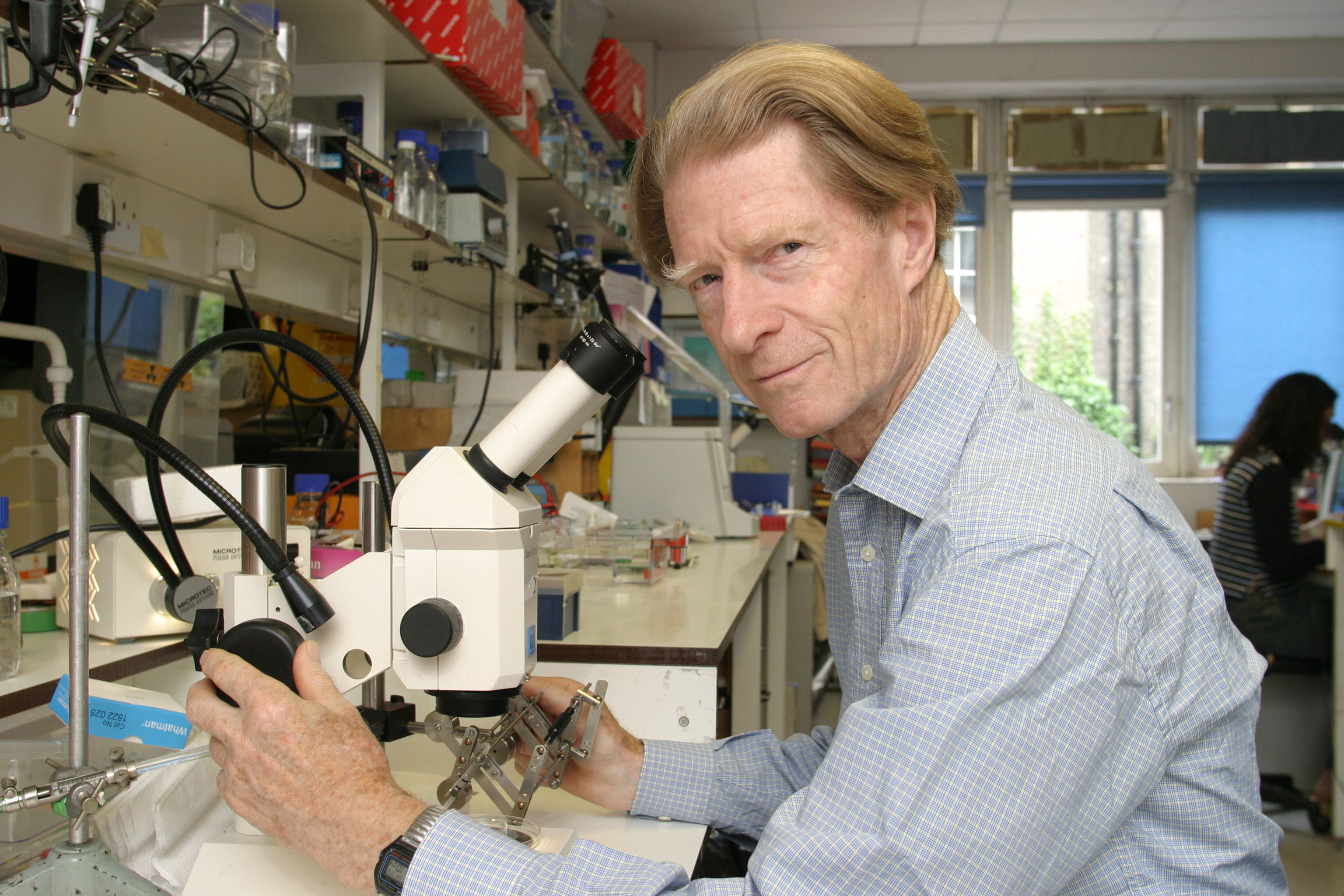
Instead, Gurdon undertook doctoral studies in developmental biology under the supervision of Dr. Michael Fischberg. At the time, one of the great questions in developmental biology was whether the specialized cells of a given organism, constituting its separate organs and tissues, contained only the genetic information of that particular organ. Many scientists had speculated about the possibility of transferring the nucleus of one cell into a cell of a different type, to determine if the genetic information contained in the nucleus was specific to the type of cell from which it was removed. The first attempts at such experiments led their authors to assert that once cells differentiated into different types, they no longer contained the complete genome. There the matter stood in 1956.
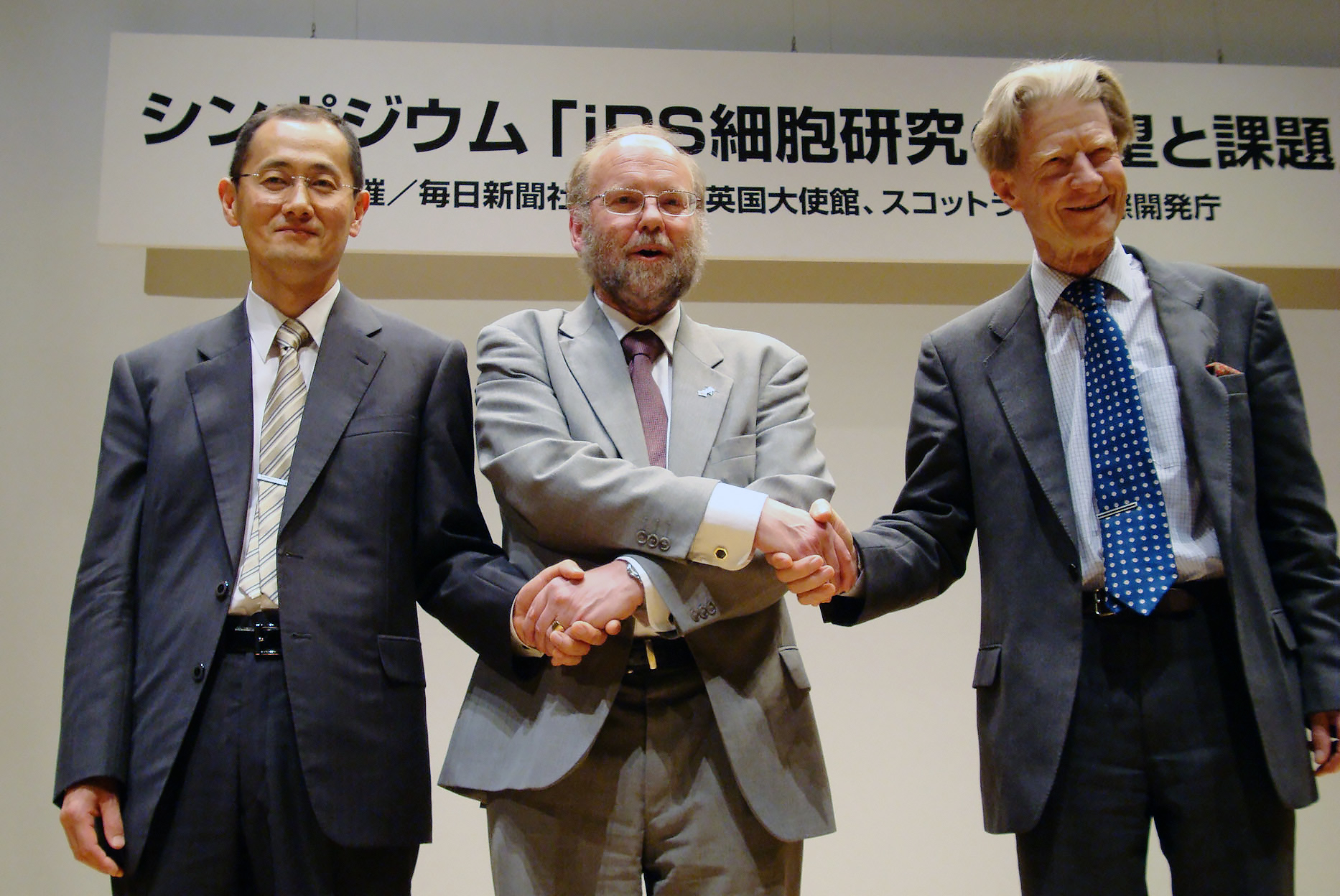
Professor Fischberg encouraged John Gurdon to explore the question further, by pursuing nucleus transfer with the Xenopus, an aquatic African frog. Gurdon’s first attempts were failures because he could not remove the original nucleus from the Xenopus egg cell. He eventually learned that the correct frequency of ultraviolet light would both damage the original nucleus and soften the wall of the cell sufficiently for him to insert the new nucleus. By 1958, he was producing mature frogs from egg cells with transplanted nuclei, but he had not yet proved conclusively that the frogs born from the altered eggs were the product of the new nucleus rather than the old.
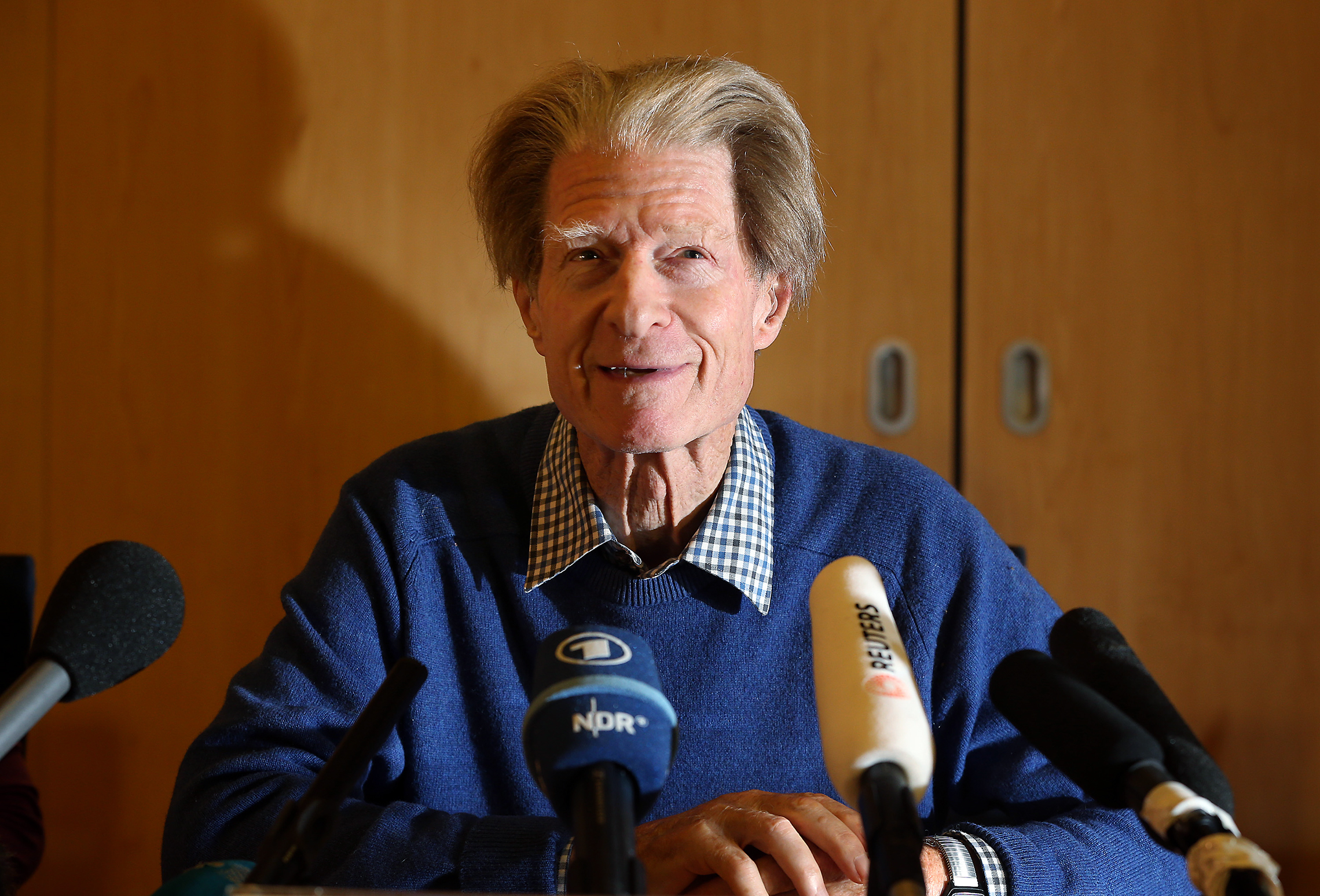
Gurdon continued his work, receiving his doctorate in 1960, but his hypothesis that the nucleus of a specialized cell contains the complete genome was not accepted by the international community of developmental biologists. He undertook postgraduate research at the California Institute of Technology (Caltech) and visited many of the principal developmental biology laboratories of the United States. When his mentor, Professor Fischberg, accepted an offer in Geneva, Gurdon was invited to assume Fischberg’s former position at Oxford.
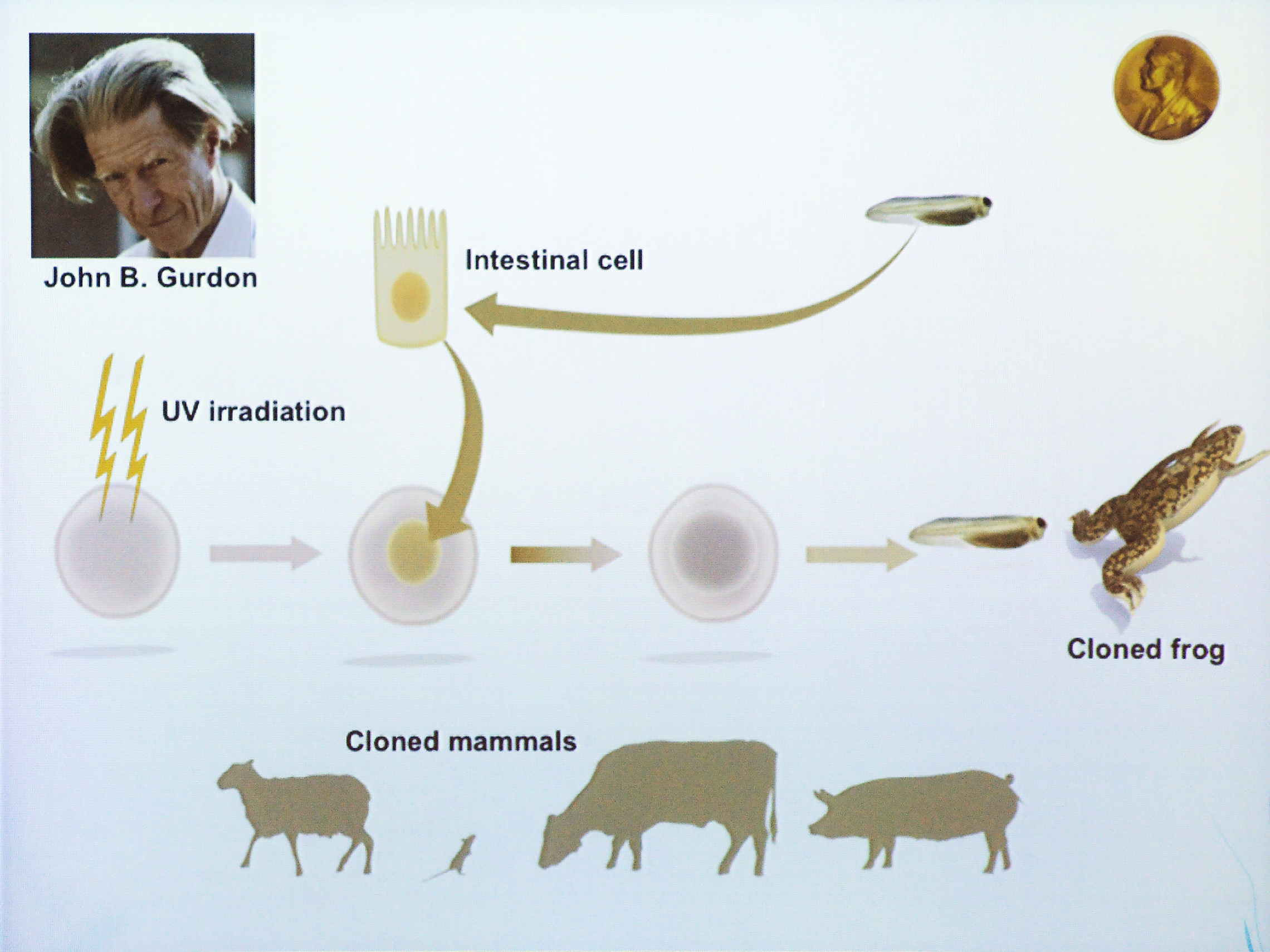
By this time, Gurdon had produced numerous mature frogs using nuclei taken from the somatic cells of swimming tadpoles. In 1962, Gurdon transferred the nucleus from an intestinal cell of a tadpole into an unfertilized frog’s egg. The egg with the replaced nucleus matured into a complete tadpole. Gurdon had sought out donor frogs with visible mutations to demonstrate that the new frogs were in fact descended from the donor tadpole. The tadpole he selected for a particularly dramatic experiment was an albino, but the egg came from a dark-colored frog. Photographs of the dark frog and her albino progeny were widely published, and Gurdon’s experiment attracted intense attention from his colleagues. The word “clone” was applied to an animal, rather than a plant, for the first time in a description of Gurdon’s work written by the British biologist J. B. S. Haldane.
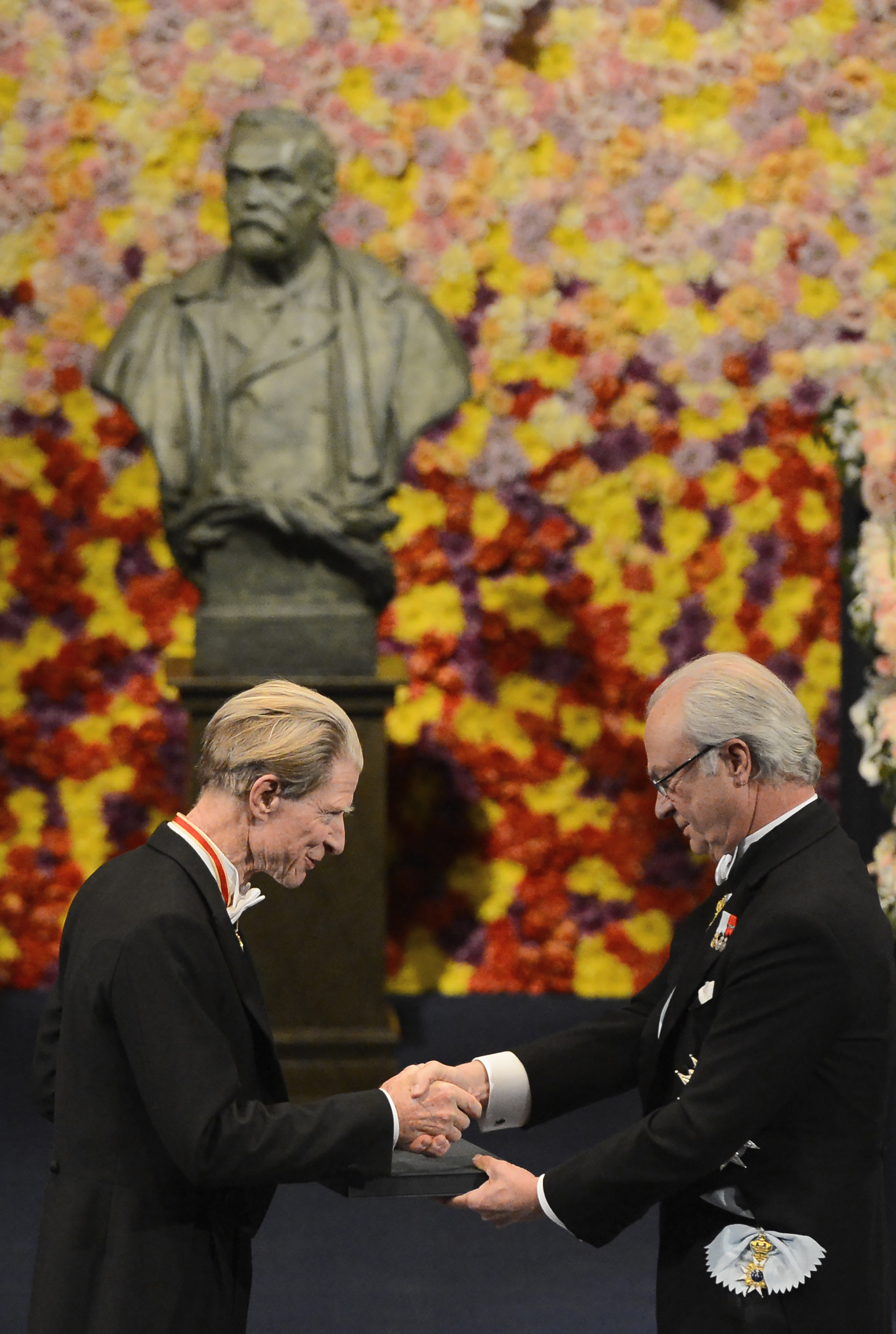
The tools and techniques Gurdon pioneered have remained in use for nuclear transfer ever since. Although its implications would not become fully apparent for many years, his experiments and their many subsequent repetitions demonstrated conclusively that the nucleus of any cell in a creature’s body contains the creature’s entire genetic information. This insight underlies all subsequent research in cell replacement and stem cell therapy.
As a junior lecturer at Oxford, John Gurdon met Jean Elizabeth Margaret Curtis, daughter of a local businessman, and the two married and raised two children. Gurdon remained a lecturer in the Zoology Department for the next nine years, but in 1971, he was offered a laboratory at Cambridge, to be funded by the Medical Research Council (MRC). His wife was attached to their home in Oxford, but the university could not offer him research facilities comparable to those now available at Cambridge, and the Gurdon family made the move. The same year, Gurdon was named a Fellow of the Royal Society. In 1983 he moved from Cambridge’s Laboratory of Molecular Biology to the Department of Zoology. Within a few years of his arrival at Cambridge, he was appointed to a senior position in Developmental Biology in Zoology.
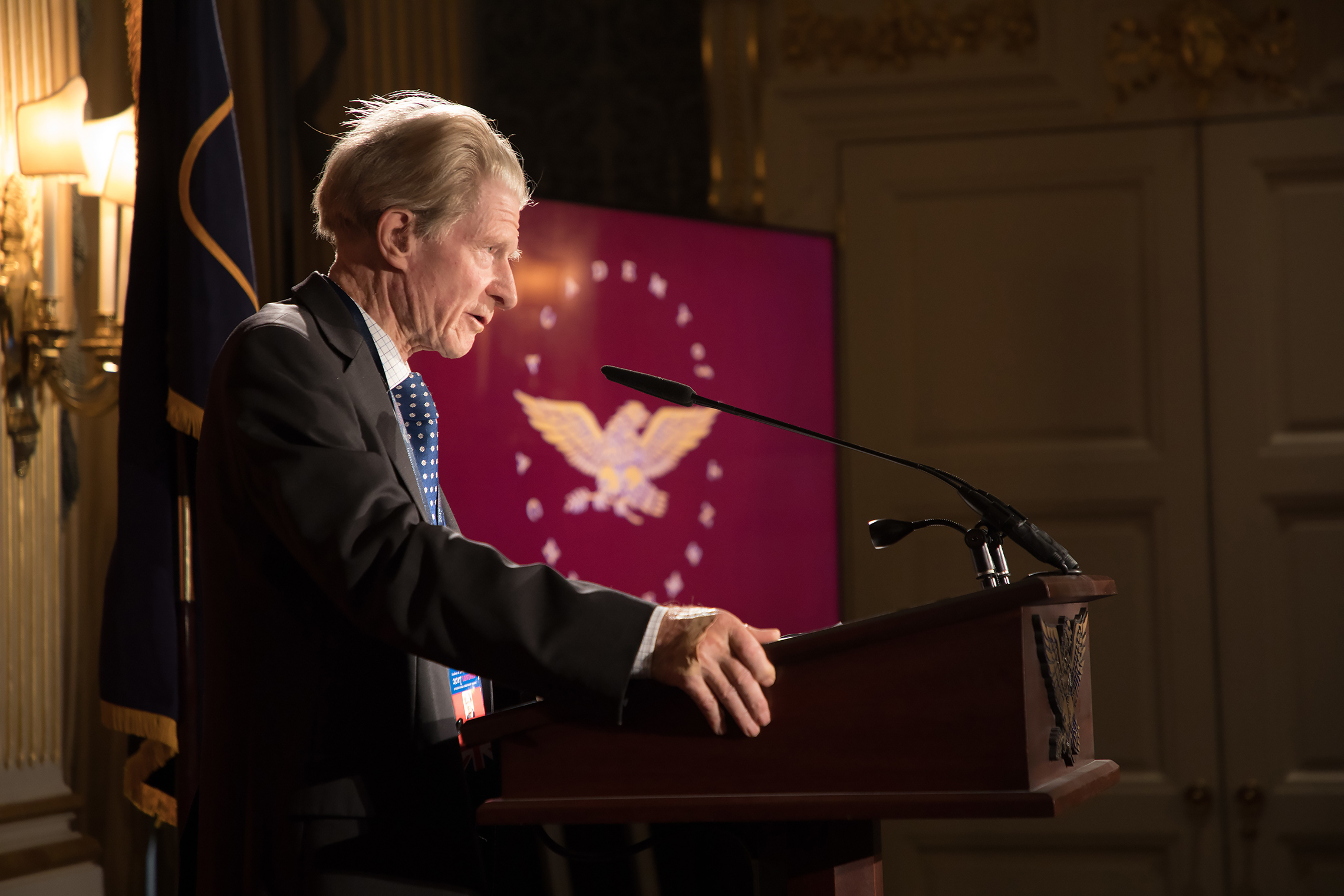
As the significance of his work became better known, he was showered with awards and honors: the William Bate Hardy Prize in 1984, the Royal Medal in 1985, the International Prize for Biology in 1987, the Wolf Prize in Medicine in 1989. He was one of the founding members of the Wellcome/CRC Institute for Cell Biology and Cancer, and chaired the institute until 2001. From 1994 to 2002, he served as Master of Magdalene College, one of the historic constituent colleges of the university, while continuing his research. In 1995, John Gurdon was knighted by Queen Elizabeth II for his services to British science; in 2004, the Wellcome Trust Cancer Research Institute was renamed the Gurdon Institute; in 2009, he received the Albert Lasker Award for Basic Medical Research; in 2012, he received the Nobel Prize in Medicine or Physiology.
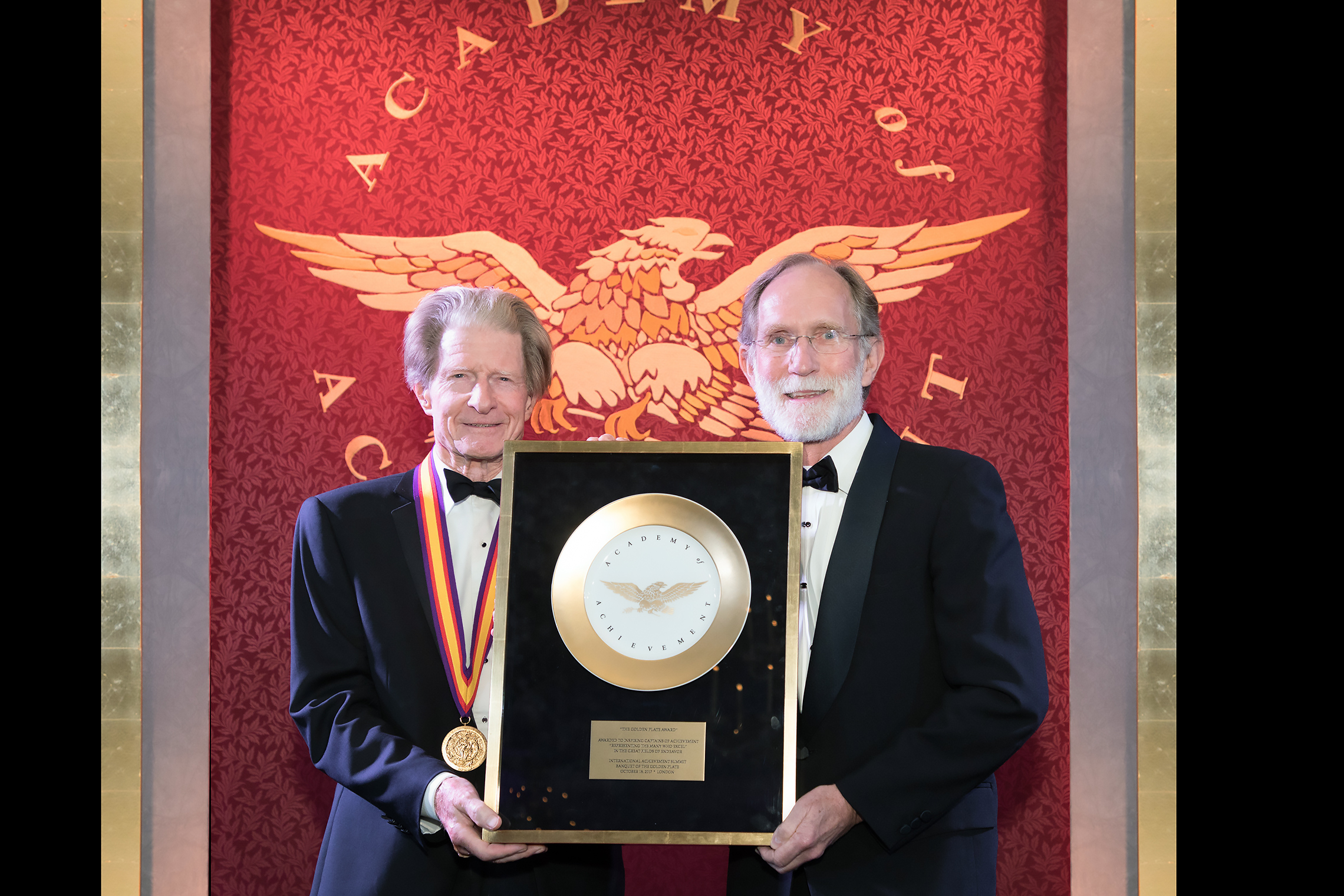
Over the years, Gurdon and his colleagues continued their work with Xenopus, employing its eggs and oocytes to study the proteins’ encoded RNA molecules. His recent research has dealt with the signaling factors responsible for cell differentiation. His experimental work with nucleus transplantation includes reprogramming the nucleus in transplanted DNA. Outside of his laboratory, Sir John has enjoyed an active outdoor life, playing squash and tennis, skiing, skating, and mountain climbing. Sir John and Lady Gurdon still live in Cambridge, where Sir John continues his research. Well into his 80s, he has no plans to retire.

When John Gurdon was 15, his biology teacher pronounced him “unsuited” for the study of science, and he received no further instruction in the subject until after graduation, when he crammed biology to win admission to the Department of Zoology at Oxford.
As a young Ph.D. candidate, his experiments transferring nuclei from the cells of tadpoles to those of fertilized frog embryos demonstrated for the first time that every cell of a living creature contains the entire genome. His discovery has proved to be of the utmost significance as science learns to revert adult cells to the embryonic stem cell state. Today, stem cell research offers enormous possibilities for the future of medicine, not least for the war on cancer.
Gurdon went on to head the Cell Biology Division at Cambridge and to chair Wellcome’s cancer research arm, known today as the Gurdon Institute. Sir John’s achievements have been recognized with the highest honors in medical science, including the Albert Lasker Award for Basic Medical Research and the 2012 Nobel Prize in Medicine — all because he ignored the judgment of one biology teacher long ago.
Let’s start by asking you about the research you did that resulted in your Nobel Prize. If you could describe it in layman’s terms, what is it that you found out?
Sir John Gurdon: Yes. That you can rejuvenate an adult cell back to an embryo cell. In a sentence, that’s what that is.
To put it in context, what did we know about cells before that?
Sir John Gurdon: I think I should explain that when I was doing this work, we did not know whether all the cells of the body have the same genes. Genes are important in deciding how our cells function. And it was unclear — it has been for thousands of years — whether cells in the body all have the same genes or whether, for example, the brain cells would have different genes from skin cells. One idea was that the reason brain cells are different from skin is because their genes are different. Actually, it turns out that they all have the same genes. This was not known, and I was put onto the project of trying to do experiments to find out whether different kinds of cells all have the same genes or they don’t. It’s a fairly clear question.
For a long time, they said the best explanation for why the brain is like it is and different from heart and different from the skin is that the genes in these cells are different. And it was a famous man called Mendel who first discovered the principle that there are things like genes which determine how cells behave. And that was fundamental in around 1860. And so people knew that genes were important and had a lot to do with the way cells function. But it’s still interesting — in the 1950s, even then, we did not know whether a skin cell had the same genes as a brain cell or they did not. So does that question make sense?
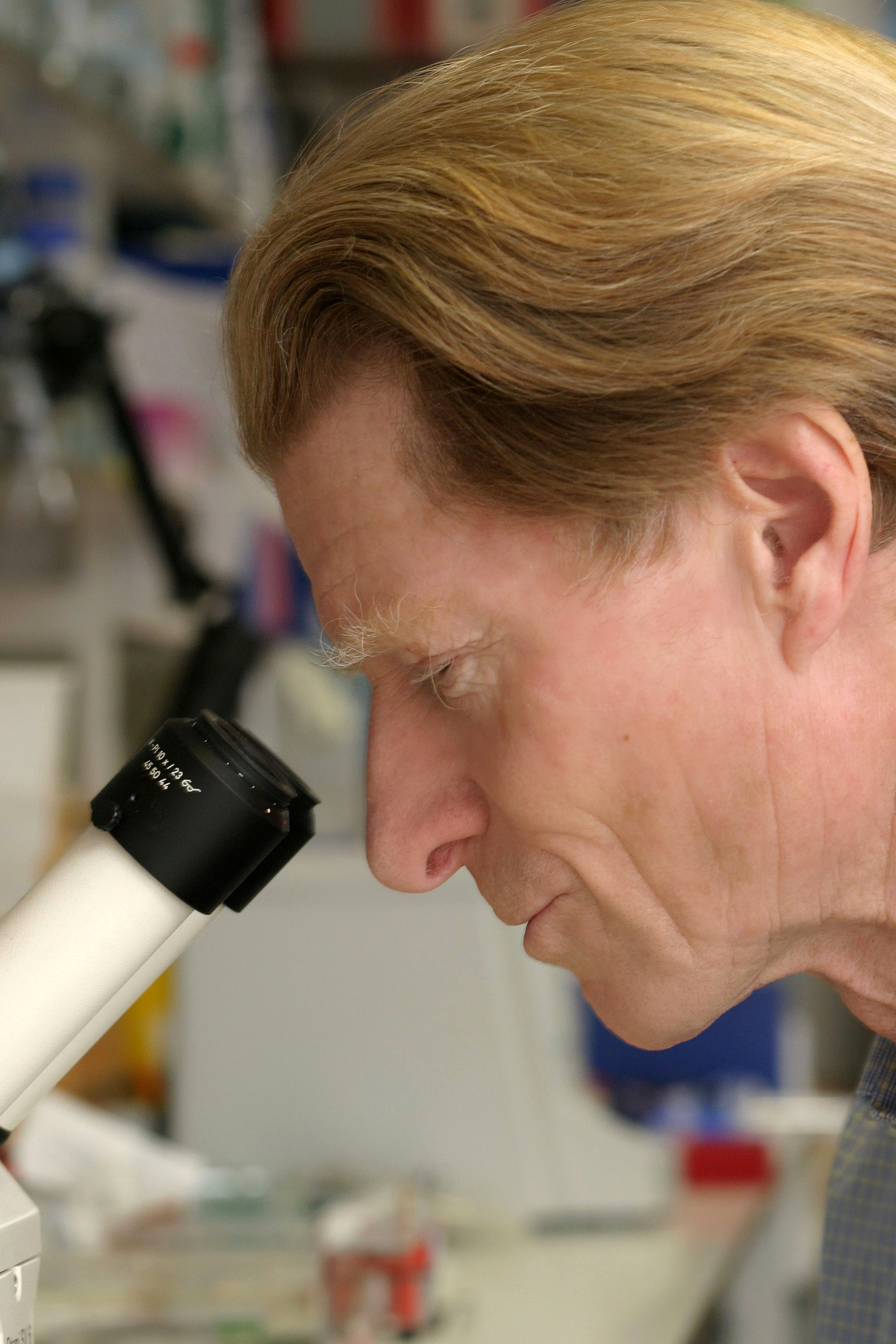
It does. What made you start to look for an experiment to find out the opposite. What made you ask the question?
Sir John Gurdon: Well, that was the question we asked. The question is how did we hope to answer the question. That was the next question, the next point.
People as early as 1880 had envisioned an experiment where you took the nucleus, with its genes, from one cell and put it into another cell, and asked if the cell that received the new nucleus would then change. So if you could do this, you would take the nucleus out of, say, a skin cell and put it into a brain cell and see if the brain cell became a skin cell — that sort of concept.
Of course, to do that, you have to take away the nucleus from the brain cell. So you replace. It’s a nuclear replacement experiment. Technically, that’s difficult to do, so people realized that the best way to do that is to use the egg, which is a large cell, and it’s easier to put a nucleus into the egg or to take the chromosomes from an egg. So the concept of how to go about this problem was fairly clear.
And the idea was that if you took the nucleus from an adult cell — or specialized cell — and put it into the egg, and took away the nucleus or chromosomes of the egg, you can ask the question whether this incoming nucleus now makes the whole egg form skin or brain, whatever you start with, or whether the egg changes it and makes it go back to the beginning again and behave like the nucleus or chromosomes of the egg.
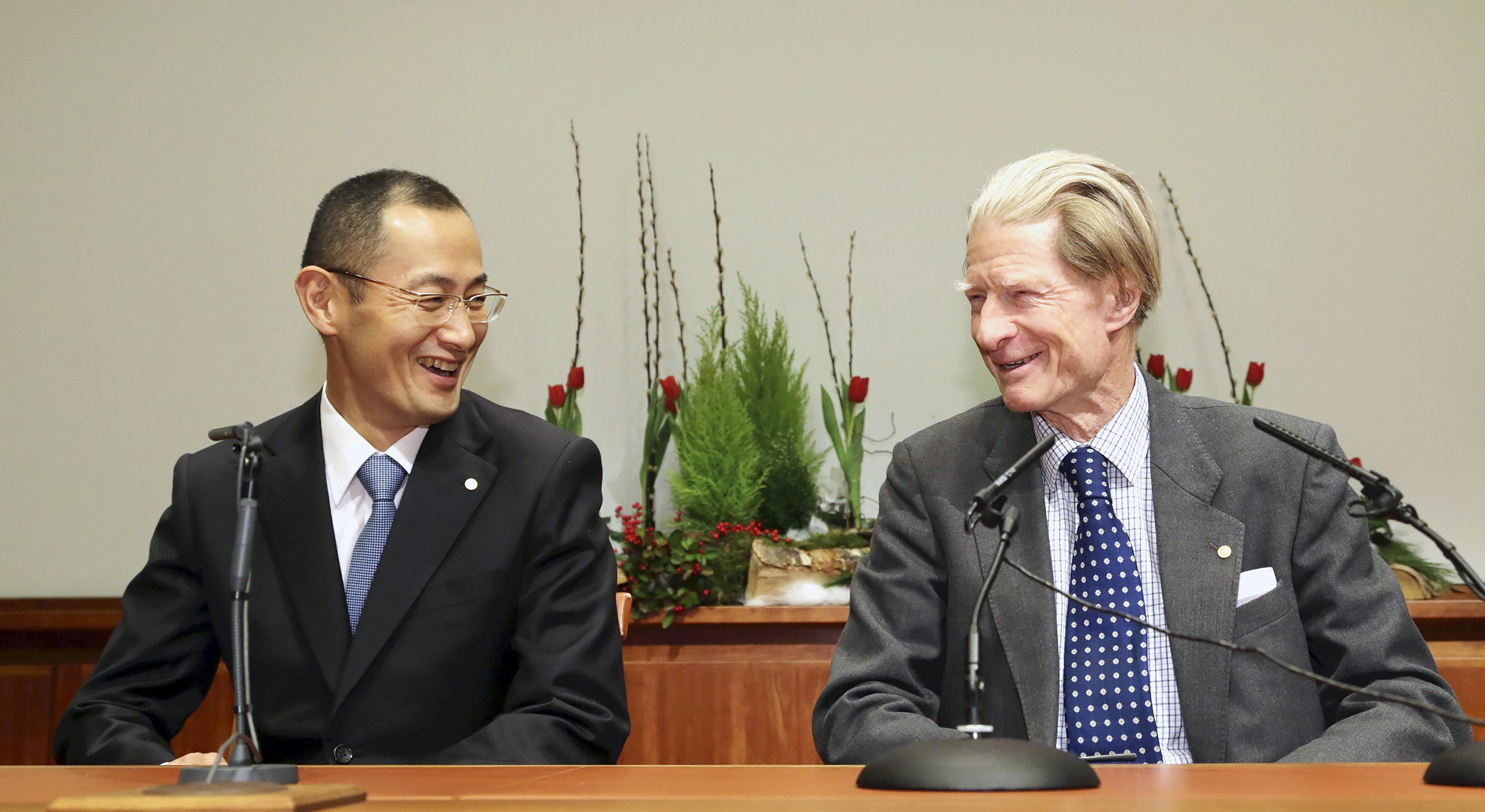
We’ve heard that you were an awful student when you started studying science in high school. Is that true?
Sir John Gurdon: The transition from being a bad student? Yes. You mean that? Yes, I was given this extremely damaging report.
The fact is, I was in a class of 250 students of the same stage, and I was in the bottom group. There were 22 such classes, and I was in the least able ones. I wasn’t really good at other work, and I came bottom of that one. I mean I was the worst out of 250 in biology. So the biology master teacher said, “Well, this person’s hopeless. There’s no question of him trying to make a career in science because he’s just no good at that.” So that meant I was taken away from that subject of science all the rest of my school time and was put into Ancient Greek and Latin, not because I was thought to be particularly good at that, but they had too many teachers and had to give them something to do. So the people who were — I know they said of me, “He has no ability to undertake any subject in depth, so we’ll put him in the bottom and put him into the sort of dumping class” of people who were not able to manage anything much. That’s how it happened.
So you were forced to drop science.
Sir John Gurdon: Yes, I was.
An area that you loved.
Sir John Gurdon: Yes.
I was taken off it immediately, after only one term, one semester. At that time, you only started science at age 15. That’s the age I was. And the teacher said, “Well, we’ve got to put him in some direction; at least we’ll get rid of the ones where he’s no good.” And that was how that happened. But I think it was really my parents who could see that what I actually was interested in was biological things, not Ancient Greek. All my holiday time, I would spend collecting insects and growing plants and that sort of thing. And I never opened an Ancient Greek book, ever, in the holiday time, but I had lots of books on insects, and that sort of thing, and plants.
The school said, “We’re not going to teach him science. He’s no good at that, so we’ll take him off that.” My parents couldn’t do much about that. I mean the school says, “We’re going to teach you what we think we can,” and it was they who got me back into it. When I finished my school time at a fee-paying school, they then said, “We’ll give you a year in which to try and get you back into science,” having had to give it up. I’m very sorry for them. I mean all this money was almost completely wasted. The only good thing is that, in retrospect, the teacher was such a bad teacher that I was spared being badly taught for three more years at school. Other people I’ve met since were taught by this teacher, and they all said he was terrible. I mean most of the time he was wrong in what he said — factually wrong, in that he’d teach the wrong information. So it was sort of a relief to be no longer under the control of someone who wasn’t a good teacher.
My mother, in particular, had seen what I spent all my time doing, and she made a lot of efforts to get me interviewed by the professor of zoology at Oxford, who she happened to know. And she said to him, “What this boy’s really interested in is biological sciences. Do you think you could accept him to do a biological degree?” And all he could do was to say, “Well, if you take a year off from schoolwork and really work hard at science and pass the elementary exams, then we could take him.”
So I had to take a year off from my expensive school to switch completely to learning elementary science. And they said, “Well, if you pass those exams, you can go on.” And luckily, I did pass them. But it was hard work. It was what they call a crammer. You just spend day after day being crammed with information. And then, at the end of all that, they give you an exam and ask you questions, and you have to learn the answers.
It was really the sort of science that we don’t like now. It was just learning facts. There was no analysis to it. And the natural mind says, “Why does this happen?” I was very keen on growing insects — caterpillars that grow into moths — and a good question would have been, “Why does that happen?” “How do they do it?” But that wasn’t the point. You just had to learn the name of the insect, and they’d test you on that. And then when that’s all — when the memory test has been done, you’re then allowed to begin to ask more interesting questions of mechanisms. So that was how I survived. It wouldn’t have been possible now. If you had no elementary knowledge of biology at age 18, there is almost no hope of being able to catch up and switch.
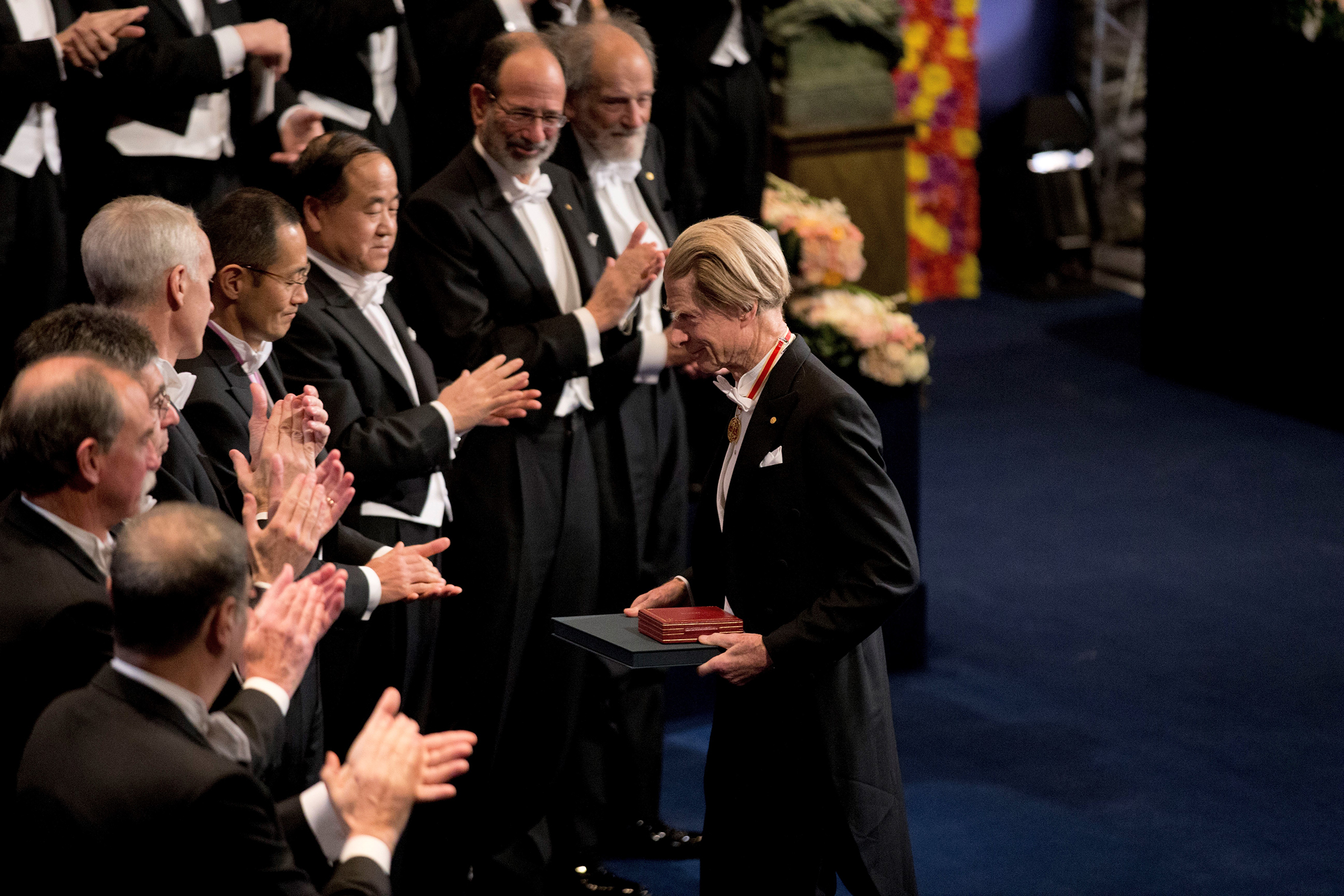
So you were determined to continue with science even though you’d been assigned to study the classics. Was this because you saw science as forward-looking and classics as looking back?
Sir John Gurdon: Well yes, I do believe that. Yes.
The view I took was that, if at school, you learned Ancient Greek, the best you can possibly do is to be as good as other people who already learned it. You’re merely going back; at best, you stay where we are. There’s nothing new about that at all. And that would be true of many subjects. So I think there’s a total fascination in advancing human knowledge and seeing what can be done with it.
So I’ve always taken that — I would take it now. I would say, people who choose to study Greek languages or any other kind of languages, already people know how to speak those languages — nothing new. Whatever language you learn, there are people who speak it perfectly, so you’re just trying to do as well as they do — nothing novel or challenging, except they’re just memory.
And many subjects in the arts field are a bit like that — even law. Mainly, what you do in law is to learn the principles that previous lawyers have established. They say, “Under these circumstances, this is the judgment that should be made.” So you learn from them to try and make these decisions which they know how to make. There’s nothing novel, nothing challenging, in my view, really, about that. So I’m rather a diehard at science in that sense.
After the hard time you’d had before, how did things go when you got to university?
I had got into the biology course at Oxford University, and I had problems with that because a lot of that was just memory. You learn the names of things. But in the last year, I somehow got the idea of how to answer these exams. And that got me a good degree. Then the person who I worked under — I’d applied, you see, at that point, to do a Ph.D. in entomology because I was interested in insects. Luckily, in retrospect, the professor rejected me. That was quite right because he wasn’t a very good entomologist anyway. But the person who took me on was someone in a different subject, and he actually said to me, would I be interested in doing a Ph.D. under him. And that was a huge blessing. He was extremely good as a mentor. I owe an enormous amount to him. He sort of picked me out of the rubbish bin, more or less, and said, “You can come and do your Ph.D. with me.” With him. So that was an enormous blessing.
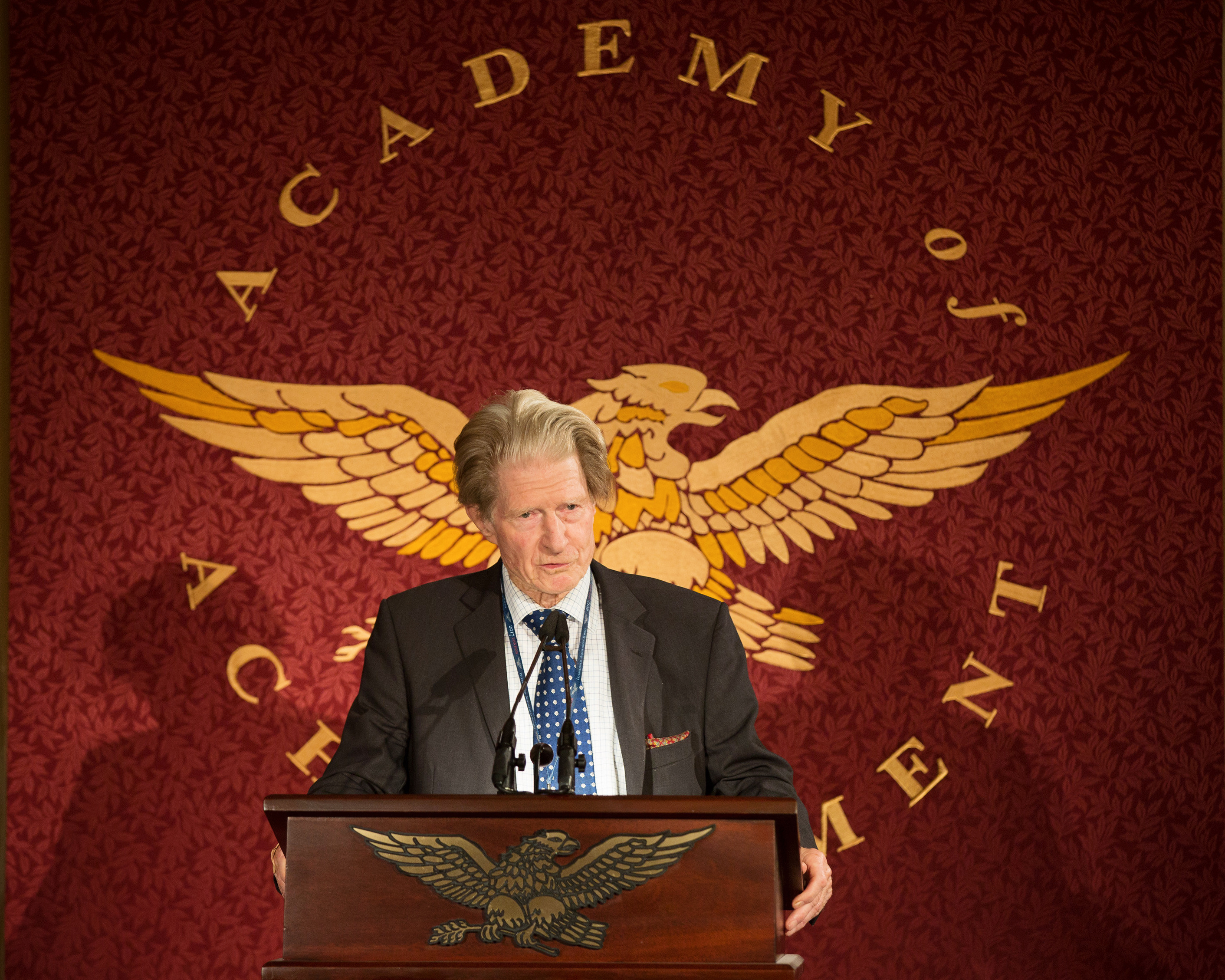
What was his name?
Sir John Gurdon: He has a Swiss name, (Michael) Fischberg. When you trace him back, his mentor was another Swiss whose mentor was another one and back. That goes back to a famous man in direct lineage called (Hans) Spemann, who is the only person in this field who got a Nobel Prize. So about four science generations downwards, I was able to pick up something from that lineage.
What did Professor Fischberg teach you that made you a better scientist?
Sir John Gurdon: He (Professor Michael Fischberg) gave me free choice. He said, “Here’s a problem for you, and this is how you might try to do it. Why don’t you try?” And as often happens, it didn’t work for a while. But he kept saying, “Well, try changing this, or try something different.” And suddenly, it suddenly worked. Not very obviously why, but it did. And so from then on, he was extremely enthusiastic. He used to say, “This is fantastic! Now, this is the way you should go.” And he left me entirely to myself. I mean he didn’t tell me how to do experiments. He just said, “This is what you should aim for, and what you’re doing is going very well, so carry on.” That was a very free way of teaching.
What he put me onto was this question that we started talking about. That is to say, “Do all cells have the same genes?” So he could see that was a crucial question. He was aware of people who had tried to do it and didn’t succeed. So he said, “It’s worth doing it a different way. Try different ways of doing it and see what happens.” Nowadays, it would be more normal for a supervisor or mentor to say, “This is what you should do. Try doing the following, the following way.” He didn’t. He said, “The problem is very important, and just try anything you can think of that might work.” It was a very relaxed way of doing it.
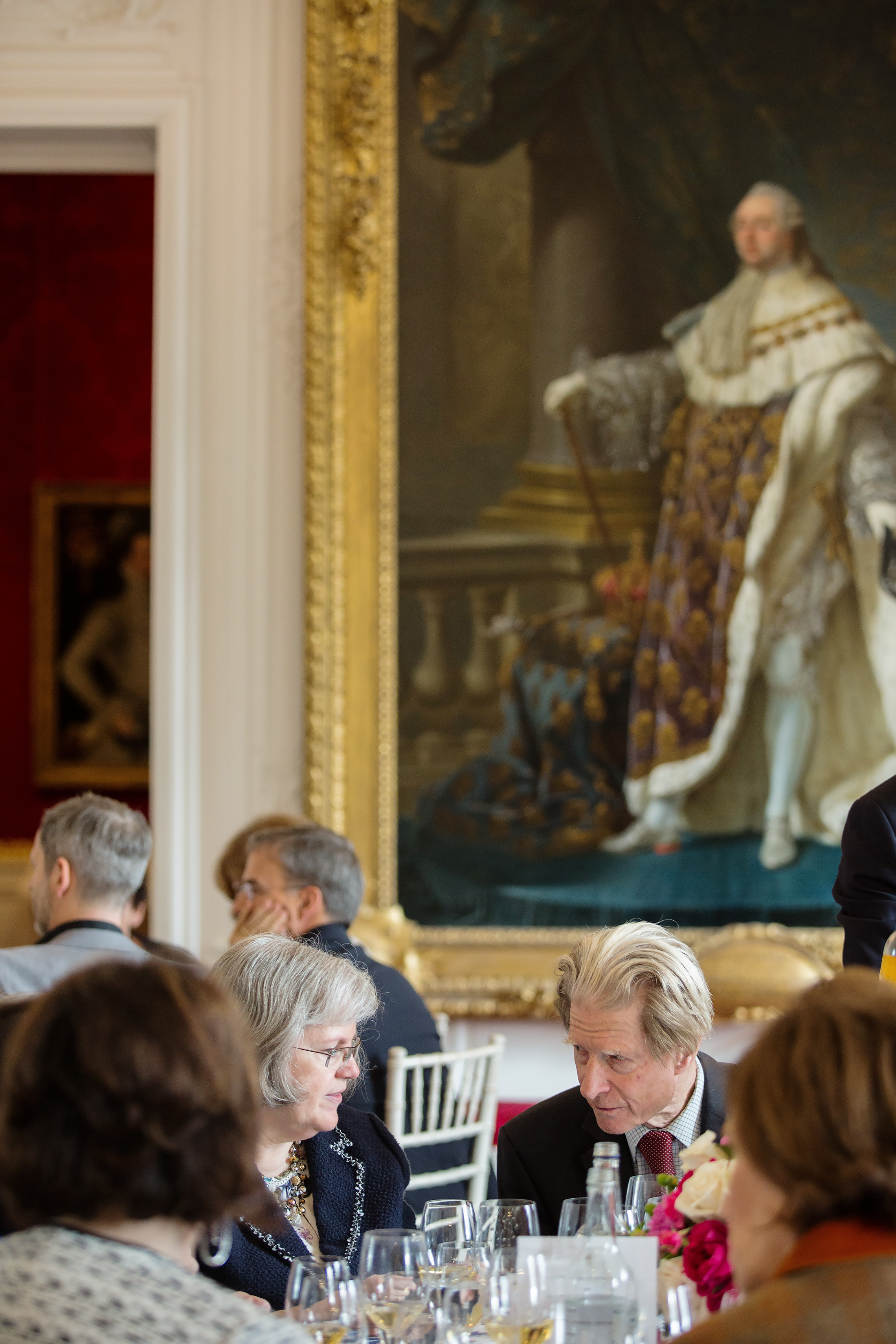
At this point, you’ve published around 350 scientific papers. Can you tell us about the first one? We’ve talked a lot about perseverance, but it sounds like the first one had a lot to do with luck.
Sir John Gurdon: The first one actually was the discovery of a new insect. I don’t know whether that’s what you knew. Yes, the story of that is quite amusing.
I was in Oxford, and they have a rather nice sort of wild area reservation where — you get permission, you can go out there and walk, and I used to go out and collect insects. I went out, one cold March day, with a net, and there were no butterflies or moths, but some fly came by, so I caught the fly and thought, “Well, I must find out what this fly is.” So I got all the necessary books, and it didn’t fit at all. So I went on and on, and it wasn’t actually a fly, it was more like a bee. It didn’t matter. I caught it, and I went through all these books, and it just didn’t fit. Every time they said, “You’ll find that it now has different kinds of legs,” well, it didn’t. It just didn’t agree at all.
So I thought, “I can’t just give up.” So I went to this entomology department, and they said, “We don’t know what it is. You’d better go up to the Natural History Museum and ask them what it is.” So I got in touch with people there, in London, and went along, and the man said, “It’s very odd. This thing has never been seen in this country before. Most extraordinary thing.” And that became a little paper, and it was a little kind of sawfly. And the embarrassing thing is that this place I went to was where the professor of entomology was working, and his main project was to identify all the insects that he could find in that place. And here was this student who just spent one Saturday afternoon and caught something that was of immense interest and which he had never noticed. So that is probably one good reason why he didn’t accept to have me as a Ph.D. student. So it was a curious thing. That was my first publication. Nothing to do with what I later did.
